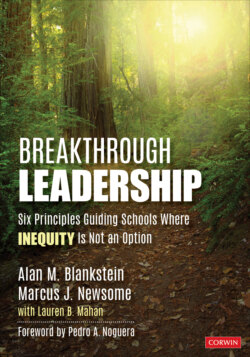Читать книгу Breakthrough Leadership - Alan M. Blankstein - Страница 9
На сайте Литреса книга снята с продажи.
Chapter 1 Out of the Crisis
ОглавлениеThe virus began in China, moved across Asia, and hit Europe hard. Not long after arriving in the United States, the virus was properly given status as a pandemic; the stock market plummeted, bringing on a recession; students were shut out of schools, which had closed; and the death toll began to mount.
According to the Seattle Times:
Scattered through the news stories and the mimeographed weekly CDC reports . . . were accounts of tragedy: A 2-year-old toddler dying in his mother’s arms on the way to the hospital in Tangipahoa Parish. A 12-year-old camper who died on a hike in San Diego. A 16-year-old exchange student dying of “fulminant hemorrhagic pneumonia” days after arriving in New York.” (Brown, 2009)
This didn’t begin in 2019–2020; this wasn’t coronavirus, or COVID-19. This was a different pandemic.
On April 17, 1957, Maurice Hilleman realized a pandemic was on its way to the United States. That day The New York Times reported on a large influenza outbreak in Hong Kong. One detail in particular caught the doctor’s eye: in the long waiting lines for clinics, the paper said “women carried glassy-eyed children tied to their backs.” He quickly got to work, putting out the word that there was a pandemic coming and pushing to develop a vaccine by the time school started again in the fall. (Little, 2020)
By the time Dr. Hilleman read the New York Times article, some 250,000 Hong Kong residents had already contracted the virus. He reached out to the United States Army medical general in Japan to further investigate and in return received the saliva of a serviceman who’d become infected. Hilleman realized that this strain of influenza was one for which we had no cure.
As the chief of respiratory diseases at the Walter Reed Army Institute of Research in Washington, DC, Hilleman had access to other flu serum and the scientific data needed to begin round-the-clock efforts to work on a vaccine in time for his predictive date of the virus’s arrival in the United States: September 1957.
While working tirelessly to develop a vaccine, Hilleman also enlisted the initially grudging support of major corporations in preparing for mass development and distribution of the serum yet to be created.
Hilleman’s work was intertwined in his own upbringing. He was born in Miles City, Montana, to parents who had survived the Spanish flu pandemic, and he credited much of his success to his rural childhood experience of raising chickens. His vaccines since then had often been derived from fertilized chicken eggs, so he foresaw the need to inform company CEOs whose help he’d enlisted to remind farmers not to kill their roosters at the end of hatching season.
The virus arrived as he’d anticipated in September 1957, as did the first allotment of vaccines. He had begun six months earlier, working first on a hunch after having read the New York Times article that April. After nine 14-hour days, Hilleman and a colleague found that it was a new strain of flu that could kill millions in the United States alone. Instead, some forty million doses of vaccines were prepared and distributed in September, and the death rate was held at sixty-nine thousand Americans, and almost two million people worldwide. Hilleman was awarded the Distinguished Service Medal from the United States Army for his work.
Robert Gallo, co-discoverer of HIV, the virus that causes AIDS, once said, “If I had to name a person who has done more for the benefit of human health, with less recognition than anyone else, it would be Maurice Hilleman. Maurice should be recognized as the most successful vaccinologist in history.” (Maugh, 2005)
Although Hilleman invented a total of forty vaccines, saving millions of people from mumps, hepatitis B, and scores of other deadly diseases, he remained humble throughout his life. He did not use his name on even one of his vaccines.
